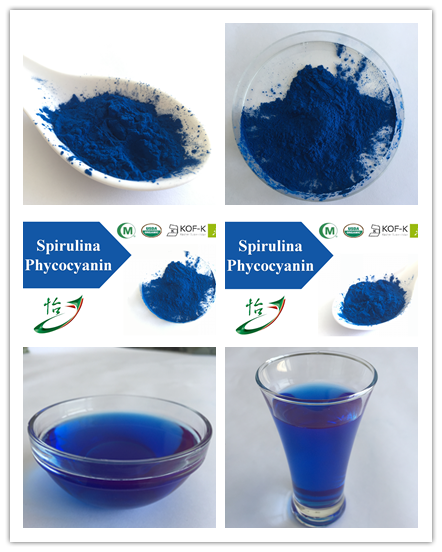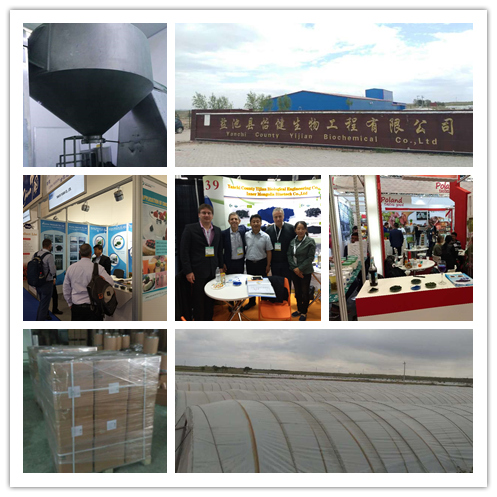Penaeus vannamei is a marine benthic crustacean that can be reared in freshwater ponds after desalination. Grass carp is a freshwater herbivorous fish that normally inhabits the middle layer. In order to give full play to the production potential of the pond, we mixed the grass carp with the white shrimp of South America. One year we stocked two species of South American white prawns and one for grass carp. On average, 430 pounds of shrimp and 564 pounds of grass carp (net weight gain) were harvested per acre pond. First, the pond conditions are not very deep, and the ponds suitable for rearing grass carp can be used for polyculture of grass carp and white vannamei. In order to improve the survival rate of shrimp seedlings, an earth dam rising above the water surface should be built in the pond, and the pond should be divided into an intermediate cultivation pond and a rearing pond, and a simple sluice gate should be built in the earth dam. The intermediate cultivation pond should be located at a high level of the pond and easy to receive water, and the area accounts for 1/10 to 1/15 of the total pond culture area. For the qualified farmers, bamboo rafts and bamboo skins can be used to build an arc-shaped greenhouse skeleton in the middle cultivation pond, and a wide transparent plastic sheet is prepared so that the shrimp can be covered during heavy rain or cold air. Insufficient water ponds can hit a well in the pond. Second, fish and shrimp polyculture technology 1, dredging and disinfection (1) The pond (including the middle cultivation pond) drained. (2) Remove as much as possible the black silt at the bottom of the pool. (3) If time permits, the pool should be exposed until the bottom of the pond is cracked. (4) Use quicklime (about 150gk/mu) to spread the pond evenly and turn over the pond bottom pond to allow the lime and pond to fully contact and ripen. (5) Quick lime disinfection Ten days after the disinfection of the pond with water: Filtration with a 60-mesh grate net Influent water about 10cm (preferably just immersed pool bottom), the bleached powder (about 1.5kg / mu) warm water after the dissolution of the whole pool Spilled. Two days later, the pool water was drained. 2. Breeding Basic Bait After the biological clear pond is sterilized, use a 60-mesh sieve to filter the inlet water to 40 cm. Choose sunny morning, according to the amount of 0.3kg/mu ammonium bicarbonate and 0.03kg/mu diammonium phosphate, add water to dissolve and pour into the pond (including the intermediate cultivation pond) evenly. After 7 days, depending on the color of the pond, the inorganic fertilizer (nitrogen and phosphorus ratio is 10:1) can be applied in an appropriate amount, and the water can be tinted to a reddish-brown, light green, or yellow-green color. 30~40cm. 3. After a few days of fertilization, a layer of small benthic communities consisting mainly of diatoms such as diatoms and organic detritus is grown on the surface of the pond; single-celled algae and cocoons are produced in pond water. Plankton-like plankton. At this time, the simple sluice gate of the earth dam shall be closed, and lime and seawater essence (or the original brine) shall be used to adjust the pH and salinity of the intermediate cultivation pond water to the value when the shrimp seedlings are out of the pond. The pH is usually 8.2~8.6, and the salinity is generally 5‰~3‰. When the water temperature difference between nursery ponds and intermediate nursery ponds does not exceed 5°C, use a small amount of shrimp to test the water. After confirming the safety, the density of 5,000 to 10,000 shrimps per acre will be raised according to the aquaculture area of ​​the pond, and all the shrimps will be raised in the intermediate cultivation pond for raising. At this time, the rearing pond has been stocked with large-sized seedlings of the species Caulis or small-sized species of the old-mouthed grass, with 300 to 400 tails per acre. Ponds with aerators can be used to properly increase the stocking density. The grass carp is planted in the pond and soaked in 3% saline for 15 minutes. After the shrimp grows to more than 2.5cm, the simple sluice gate of the earth dam is opened so that fish and shrimp can freely enter and exit. 4. After the fish and shrimp seedlings are cultivated in the lower pool, they should be observed on a regular basis and observe the fish and shrimp activities and growth in order to scientifically feed the food and prevent diseases, and monitor the changes in the water environment. (1) Water quality regulation Water quality is an important factor that determines the success or failure of aquaculture. During the aquaculture process, the monitoring of pond water quality must be strengthened to avoid large fluctuations in the environmental factors in the pond. In the early stage of shrimp aquaculture (below 5cm in body length), in order to facilitate the growth of the bottom-basket food organisms, the pool water should not be too deep, and only fresh water (2~4cm each time) should be regularly added, and the water depth should be controlled so that the sunlight can transmit to The bottom of the pool is suitable. In the middle and late period of the breeding period (more than 5cm in body length), gradually add water to the normal water level, change the water once in 2~3 days, and change the amount of water to be less than 10% of the total amount of pool water. Every time after adding water or changing water, pay attention to changes in the color of the pond, apply the above mentioned inorganic fertilizer in an appropriate amount, and make the pond's food organism always maintain a stable density and a vigorous growth state. If the water quality deteriorates, the amount of water exchanged should be increased in a timely manner, and the zeolite powder (20kg/mu) should be uniformly applied, and beneficial bacteria such as EM or photosynthetic bacteria must be applied to the pond in order to improve the water quality and pond bottom. In the culture process, the pH of the pool water should be kept between 7.8 and 8.6. It is usually adjusted by using Quanchiposa lime and alkali-reducing enzymes. (2) Feeding Science Feeding is a measure to reduce the cost of breeding and improve the breeding efficiency. Grass carps are mainly fed with green feed (weeds, vegetables or beans, melons, stems and leaves of corn, etc.). The daily feeding amount depends on the weather, the water quality, and the appetite of the fish. Generally, it can reach 80% fullness. In the early stage of prawn culture, no feed is needed; in the middle and late stages of cultivation, shrimps should be conscientiously filled with stomach (gastric cavity filled with food), half-stomach (gastric foods account for more than 1/2 of the stomach cavity), residual stomach (gastric contents (Food lacks 1/2 of the stomach cavity), empty stomach (gastric cavity without food) 4 levels of feeding statistics. Under normal circumstances, if more than 50% of the prawns have residual stomach and empty stomach, they can feed 1 to 2 synthetic feeds at night, and the daily feeding amount accounts for about 4% of the total shrimp weight (increased with body length). Reduced), should be more than 60% of the shrimp after feeding 1 hour to reach a full stomach state is appropriate. (3) Disease prevention Prevention of disease mainly. Apply lime or calcium peroxide evenly every 15 days. Lime puts 20kg per acre, and put calcium peroxide to make the pool water reach 6ppm. For qualified farmers, fish and shrimp can be fed regularly with special Vc and allicin mixed feed, and the dosage should be used according to the manufacturer's instructions. Third, the harvest after three or four months of breeding, prawns have reached the market specifications. Should be based on shrimp growth, climate change, water temperature conditions, market conditions, timely collection and listing, in order to continue stocking shrimp. Fishing methods: 1, shrimp cage fishing method in the evening, set the shrimp cage in the pond, early capture. This method has a small catch and a low catch rate, but it has less damage to grass carp. 2. Pushing net fishing method The fishing method is to push two crossed bamboo rafts with a net at the front end through a single person's walking, so that the nets of the nets are moved against the bottom of the pond to capture the shrimps. This method has a large catch and a high net catch rate, but it has the potential to scratch the grass carp.
This classification summarizes the Spirulina Phycocyanin produced by our own factory in northwestern of China .
We have advanced equipment and strict quality control system to ensure the quality and production.

The products under the classification are:
1. Spirulina Phycocyanin Powder .
2. Natural Blue Edible Pigment .
Various parameter specifications of our product:
Naturland Certified ; CERES certified .
EU & NOP standard ; Kosher & Halal Available .
Low heavy metals & Micro Contents , Low & Stable PAH4 Level ,
PAH4 value is less than 10 ppb .Low microorganismsNon-Irradiation ,
Non GMO , Gluten Free , Allergen Free , Pesticides Free .
Own Factory : Manufacture in northwest of China . Legitimacy , Regularity , Cultural .
Own Lab : Quality control and Product development . Strictly , Creativity , Responsibility .

About Company
Yanchi County Yijian Biotechnol Co.,Ltd
was founded in Dec 2012 ,
by Mr. Dezhi Zhang ,
the legal representative of the company .
Company registered capital is 10 million RMB .
The main business sectors are culture , processing , internal sales , import and export trade of Organic Spirulina and Organic Chlorella products .
Yijian is known globally as one of the major suppliers of microalgae products across the world .
Annual production rate is 600 Mt .
Average annual sales income is around 5 million dollar .
Spirulina Phycocyanin
Spirulina Phycocyanin,Spirulina Extract Phycocyanin,Blue Spirulina Phycocyanin,Natural Spirulina Phycocyanin
YANCHI YI JIAN BIOLOGICAL PROJECT CO.,LTD , http://www.spirulina-yj.com

